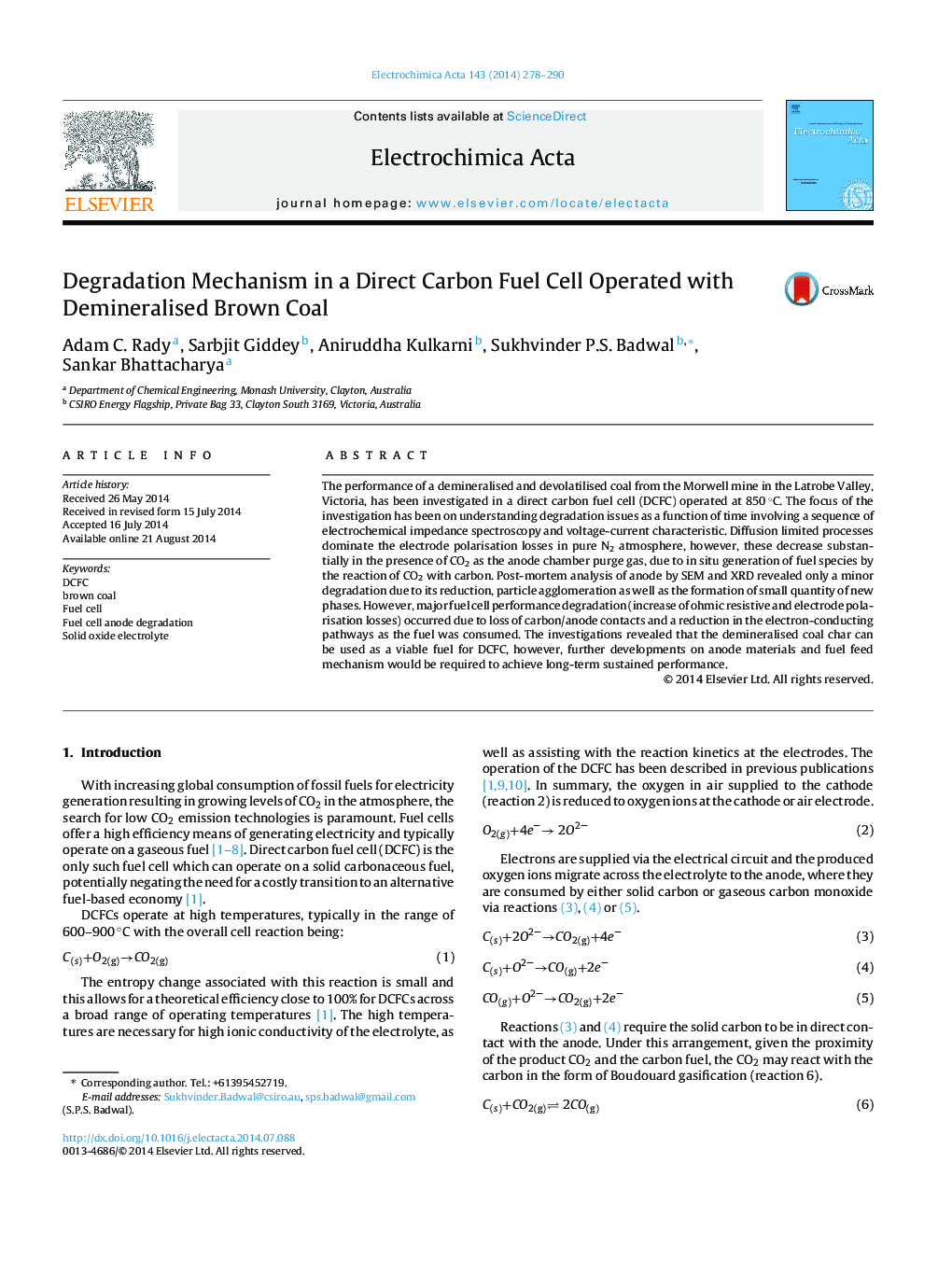| Article ID | Journal | Published Year | Pages | File Type |
|---|---|---|---|---|
| 185164 | Electrochimica Acta | 2014 | 13 Pages |
•Degradation mechanism studied for demineralised coal in a direct carbon fuel cell.•Diffusion limited processes dominate the electrode polarisation losses in pure N2.•Major fuel cell performance loss occurred due to loss of carbon/anode contacts.•The anode retained its phase structure with minor other phases formed in operation.
The performance of a demineralised and devolatilised coal from the Morwell mine in the Latrobe Valley, Victoria, has been investigated in a direct carbon fuel cell (DCFC) operated at 850 °C. The focus of the investigation has been on understanding degradation issues as a function of time involving a sequence of electrochemical impedance spectroscopy and voltage-current characteristic. Diffusion limited processes dominate the electrode polarisation losses in pure N2 atmosphere, however, these decrease substantially in the presence of CO2 as the anode chamber purge gas, due to in situ generation of fuel species by the reaction of CO2 with carbon. Post-mortem analysis of anode by SEM and XRD revealed only a minor degradation due to its reduction, particle agglomeration as well as the formation of small quantity of new phases. However, major fuel cell performance degradation (increase of ohmic resistive and electrode polarisation losses) occurred due to loss of carbon/anode contacts and a reduction in the electron-conducting pathways as the fuel was consumed. The investigations revealed that the demineralised coal char can be used as a viable fuel for DCFC, however, further developments on anode materials and fuel feed mechanism would be required to achieve long-term sustained performance.
Graphical abstractFigure optionsDownload full-size imageDownload as PowerPoint slide
